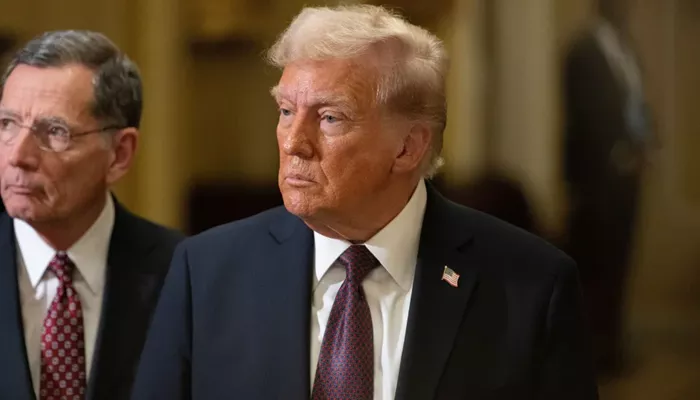Global stock markets rose on Tuesday, while the U.S. dollar gained ground after a sharp decline the previous day. The market’s attention was focused on the mixed signals from President Donald Trump’s return to the White House, particularly regarding trade policy and tariffs.
The Canadian dollar and Mexican peso were the most affected by market fluctuations after Trump hinted at imposing a 25% tariff on the neighboring countries, potentially starting as soon as February 1. However, some investors found relief as Trump did not announce a more sweeping set of tariffs at the outset of his second presidency, which helped stabilize bond yields. “Markets are still absorbing the flurry of executive orders from Trump, but there is a general sense of relief,” analysts at TD Securities stated in a note.
The MSCI World Stock Index rose by 0.7%, with U.S. stocks also showing positive movement. The S&P 500 gained 0.9%, the Nasdaq climbed 0.6%, and the Dow Jones jumped 1.2%.
The dollar’s surge initially caused the Mexican peso to drop by more than 1%, while the Canadian dollar hit a five-year low of $0.689. However, the sell-off moderated as the day progressed. Jan Von Gerich, chief strategist at Nordea, cautioned investors not to assume that the threat of U.S. tariffs had been entirely averted. “The fact that he didn’t start with tariffs doesn’t mean they won’t come later,” Von Gerich said. “For the global equity market, I think it’s all about Trump now.”
In Europe, shares saw modest gains, while Asian markets experienced small upticks. The European Union and China were reassured by the fact that tariffs were not immediately imposed. Europe’s STOXX 600 index rose 0.4%, and MSCI’s Asia ex-Japan stock index added 0.3%.
The dollar index, which tracks the currency against six major rivals, remained flat at 108.01, recovering slightly from its largest daily decline since November 2023. It had previously reached 108.79, but still failed to recover the 1.2% drop from Monday. The euro ended flat at $1.04200, after a 1.42% rise the previous day.
Bond Yields Dip, China’s Economic Impact Uncertain
Despite expectations for tariffs as part of Trump’s executive orders on his first day in office, many investors were caught off guard by his more cautious approach. The dollar, which had appreciated by about 5% since Trump’s victory in November, dipped as markets reacted to the less aggressive tariff announcements.
The U.S. 10-year Treasury yield fell by 4.7 basis points to 4.558% on Tuesday. While the yield had been rising due to a strong economy and the Federal Reserve’s decision to reduce rate cuts in mid-September, the recent dip reflects uncertainty over Trump’s trade policies.
Chinese stocks remained steady as Trump refrained from issuing definitive threats against Chinese exports. However, he warned that tariffs could still be imposed if Beijing failed to approve a U.S. deal to become a half-owner of the short-video app TikTok’s U.S. operations. “It’s part of a transactional methodology,” said Timothy Graf, head of macro strategy for EMEA at State Street. “It’s better news than just slapping 60% or 100% tariffs on something, but something is likely coming.”
China’s CSI 300 index was unchanged, while Japan’s Nikkei 225 rose by 0.32%.
Oil Prices Decline as Energy Outlook Weighs on Markets
Oil prices fell on Tuesday as investors weighed Trump’s plans to boost U.S. energy production against the backdrop of ongoing trade uncertainties. Brent crude slipped 0.8% to $79.50 per barrel, while U.S. crude dropped 2.3% to $75.90 per barrel.
Related topics:
- India Surpasses China in Gold Purchases, Buying 51% More in Three Months
- Gold Rates Skyrocket in Chennai on Diwali, 24K Gold Exceeds Rs. 81,000 Per 10 Grams
- Alamos Gold Falls Short of Q4 Production Expectations, Updates Future Guidance


